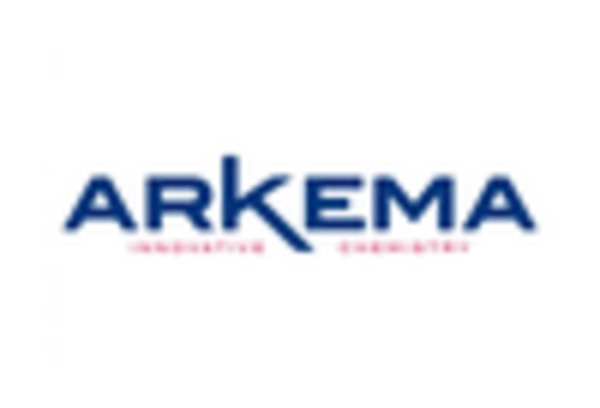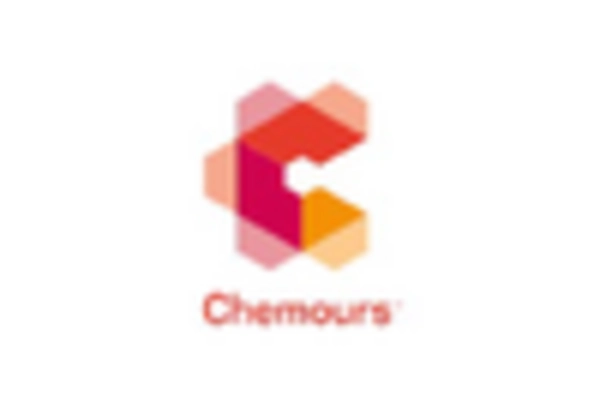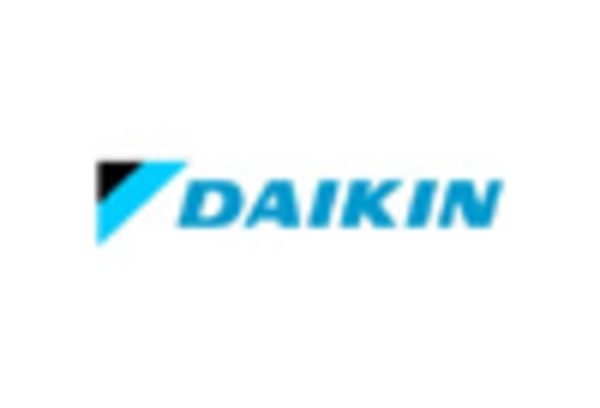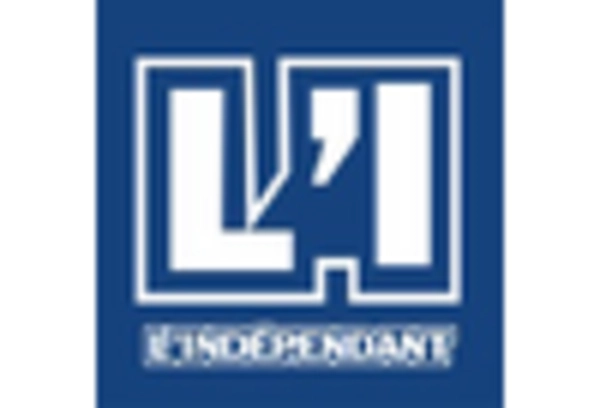Increased Focus on HVAC Systems
The refrigerant market is significantly impacted by the increased focus on heating, ventilation, and air conditioning (HVAC) systems. As the demand for HVAC systems rises, particularly in residential and commercial sectors, the need for effective refrigerants becomes paramount. The HVAC industry is projected to grow at a rate of approximately 5% annually, driven by factors such as urbanization and climate change. This growth necessitates the use of refrigerants that not only comply with environmental regulations but also enhance system efficiency. Manufacturers are responding by developing refrigerants that optimize HVAC performance while minimizing environmental impact. Consequently, the interplay between HVAC system demand and refrigerant innovation is likely to drive substantial growth in the refrigerant market.
Rising Consumer Awareness and Preferences
Rising consumer awareness regarding environmental issues is shaping the refrigerant market in the US. As consumers become more informed about the impact of refrigerants on climate change, there is a growing preference for eco-friendly options. This shift in consumer behavior is prompting manufacturers to prioritize the development of low-GWP refrigerants. Market Research Future indicates that approximately 70% of consumers are willing to pay a premium for products that are environmentally friendly. This trend is influencing purchasing decisions across various sectors, including residential, commercial, and industrial applications. As a result, companies that align their product offerings with consumer preferences for sustainability are likely to gain a competitive edge in the refrigerant market.
Technological Innovations in Refrigeration
Technological innovations are reshaping the refrigerant market, as advancements in refrigeration technology lead to the development of more efficient and environmentally friendly refrigerants. Innovations such as variable speed compressors and smart controls are enhancing system performance and reducing energy consumption. The introduction of new refrigerants that operate effectively at lower temperatures is also gaining traction. For instance, refrigerants with lower GWP are being engineered to work seamlessly with existing systems, minimizing the need for extensive retrofitting. This technological evolution not only meets regulatory demands but also aligns with consumer preferences for sustainable solutions. As a result, the market is likely to see a continuous influx of innovative refrigerants that cater to both performance and environmental considerations.
Growing Demand for Energy-Efficient Solutions
The refrigerant market is experiencing a surge in demand for energy-efficient solutions, driven by rising energy costs and a growing emphasis on sustainability. As consumers and businesses alike seek to reduce energy consumption, the adoption of energy-efficient refrigeration systems becomes increasingly critical. According to recent data, energy-efficient systems can reduce energy usage by up to 30%, which translates into significant cost savings. This trend is particularly evident in commercial sectors, where operational efficiency is paramount. The integration of advanced refrigerants that enhance system performance is likely to play a pivotal role in this transition. Consequently, manufacturers are focusing on developing refrigerants that not only comply with environmental standards but also optimize energy efficiency, thereby propelling growth in the refrigerant market.
Regulatory Compliance and Environmental Standards
The refrigerant market is increasingly influenced by stringent regulatory compliance and environmental standards in the US. The Environmental Protection Agency (EPA) has implemented regulations aimed at phasing out high Global Warming Potential (GWP) refrigerants. This regulatory landscape compels manufacturers and users to transition to lower-GWP alternatives, thereby driving demand for compliant refrigerants. As of 2025, the market is witnessing a shift towards refrigerants that meet these environmental criteria, with a projected growth rate of approximately 6% annually. Companies that adapt to these regulations not only enhance their market position but also contribute to sustainability efforts, which are becoming paramount in the industry. This regulatory pressure is likely to continue shaping the refrigerant market, as stakeholders seek to align with evolving environmental policies.

















Leave a Comment